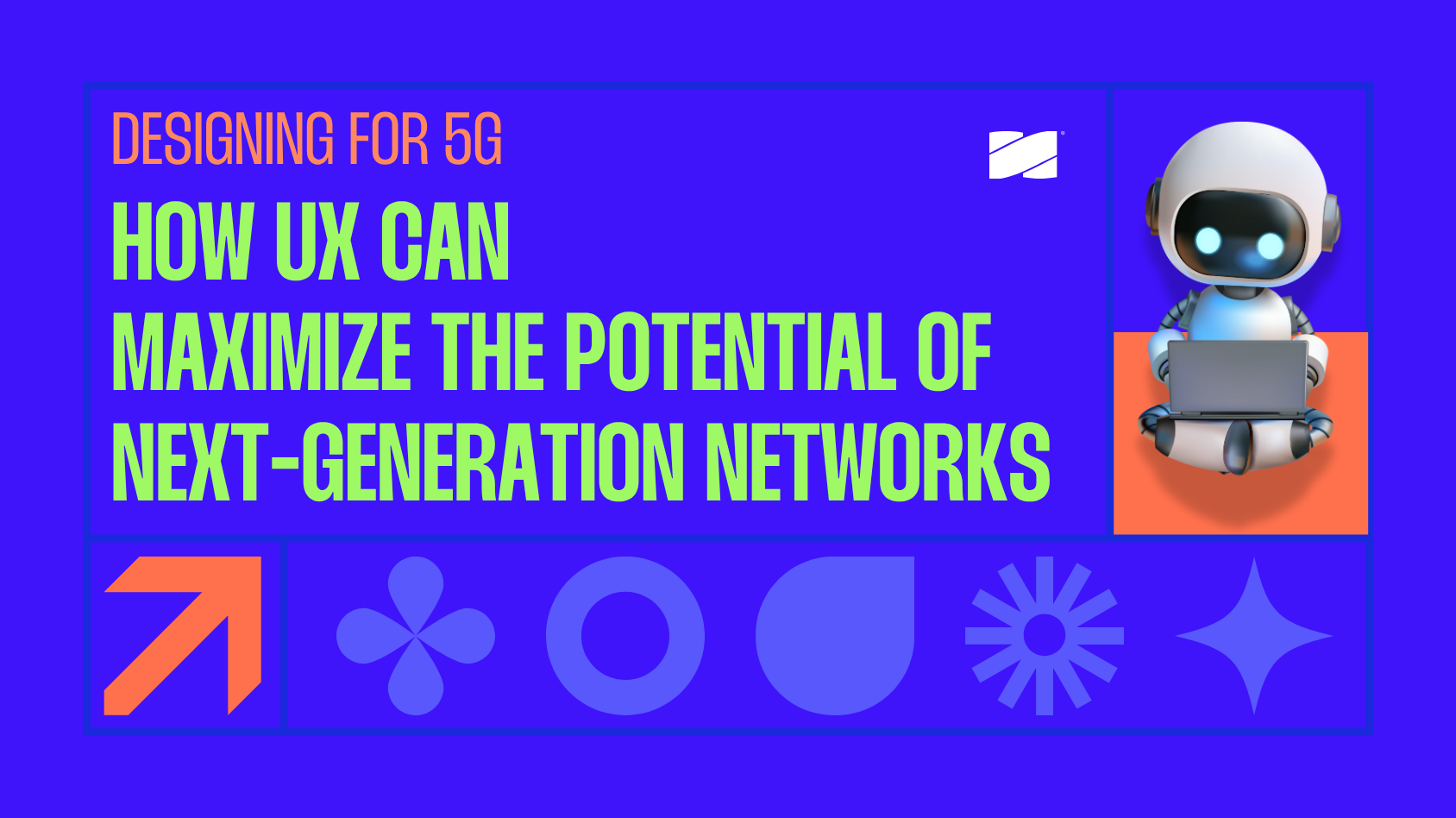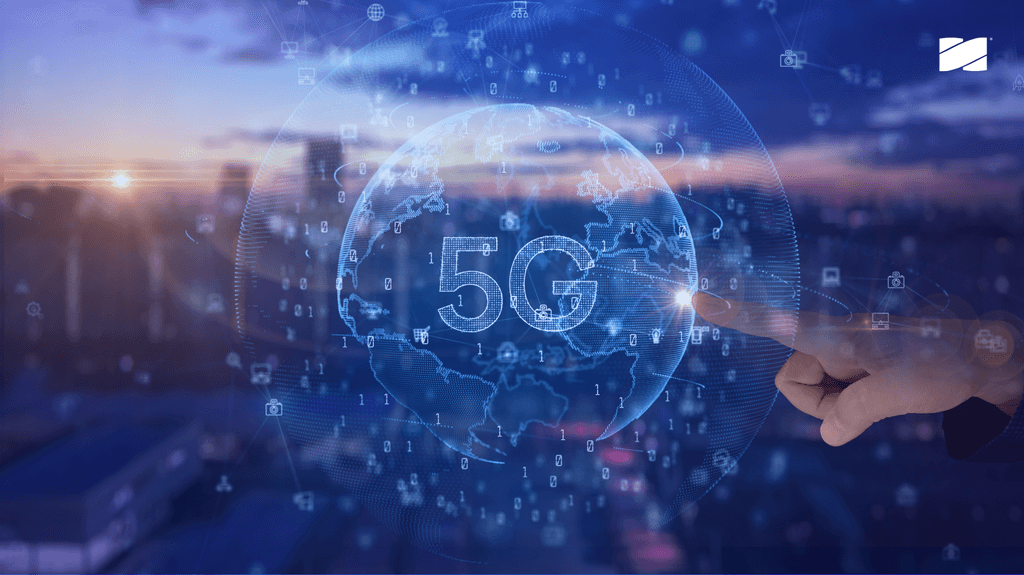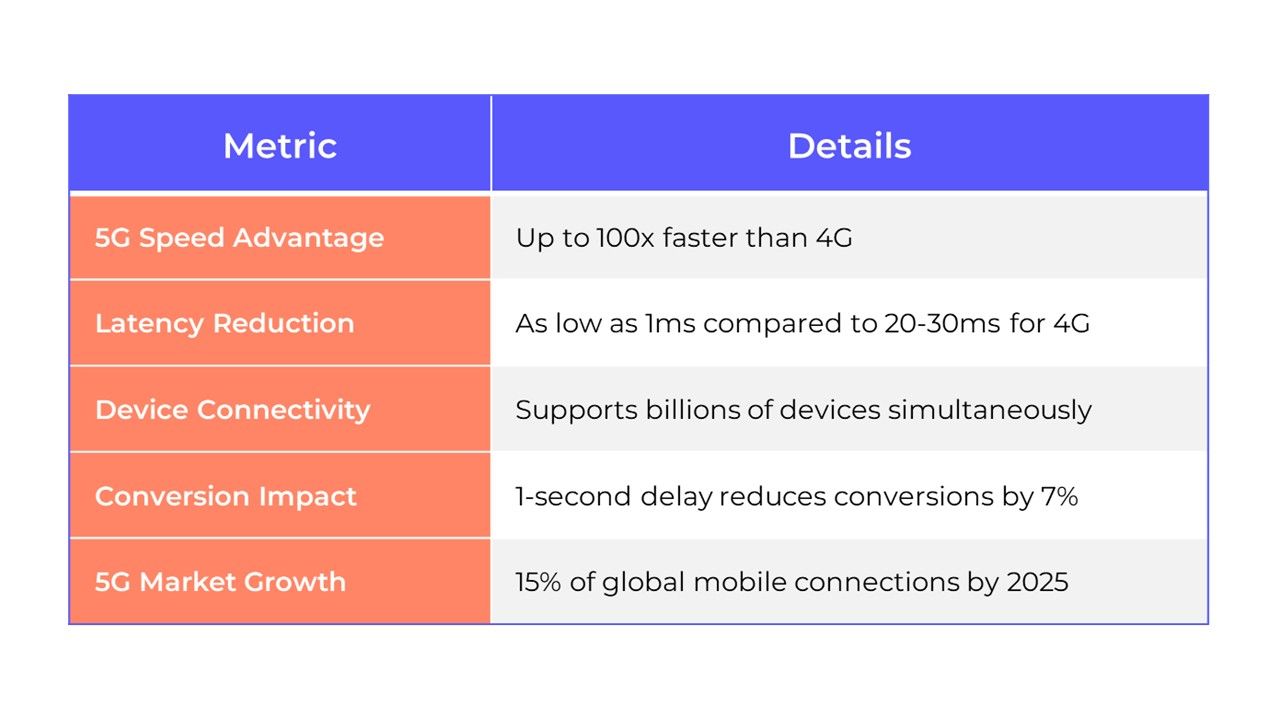

Rohan Sridhar
Posted On: July 22, 2025
Share
Introduction
The advent of 5G technology represents a transformative leap in telecommunications, offering unprecedented speed, ultra-low latency, and the capacity to connect billions of devices simultaneously. This fifth generation of wireless networks is not merely an incremental upgrade; it is a foundational shift that will redefine how businesses operate and how users interact with digital products and services. For user experience (UX) designers, 5G presents both a challenge and an opportunity. It demands a rethinking of traditional design paradigms to fully harness its capabilities while ensuring that digital experiences remain intuitive, efficient, and delightful.
As per a GSMA Study, by 2025, 5G is expected to account for 15% of global mobile connections, indicating a significant shift in how users engage with digital services. At Happening Design, we understand that 5G is more than just a technological advancement—it is a catalyst for innovation across industries. From enhancing operational efficiency to enabling entirely new business models, 5G’s potential is vast. However, realizing this potential requires a deliberate focus on UX design. In this blog post, we explore how UX design can maximize the opportunities presented by 5G networks, addressing the needs of businesses and users alike. We will delve into key areas such as performance optimization, immersive technologies, IoT integration, security, and emerging business models, providing actionable insights for C-level executives and design leaders.
Understanding 5G and Its Implications for UX

Before exploring the role of UX design, it is essential to understand the core attributes of 5G technology. Unlike its predecessors, 5G offers three critical enhancements:
- Speed: Data transfer rates up to 100 times faster than 4G, enabling near-instantaneous loading of content.
- Latency: Reduced to as low as 1 millisecond, compared to 20-30 milliseconds for 4G, facilitating seamless real-time interactions.
- Capacity: The ability to support a massive number of connected devices, paving the way for widespread adoption of the Internet of Things (IoT).
These improvements are not merely technical specifications; they are enablers of new possibilities. For UX designers, this necessitates a shift in approach. Designing for 5G is not solely about leveraging speed but about creating entirely new types of interactions and experiences that were previously constrained by technological limitations. For telecom executives, this means recognizing that superior technology alone is insufficient—user experience is the key to unlocking 5G’s full potential.
Enhancing Performance and Speed

One of the most immediate impacts of 5G on UX design is its ability to deliver lightning-fast performance. As per Google, 53% of mobile users abandon websites that take more than 3 seconds to load, underscoring the need for 5G’s high-speed capabilities to enhance UX. This has profound implications for user satisfaction and business outcomes:
- Faster Load Times: Websites and applications can now load content almost instantaneously, reducing user frustration and increasing engagement. Research indicates that a one-second delay in page load time can result in a 7% reduction in conversions, underscoring the importance of speed.
- Complex Visuals and Animations: With 5G bandwidth, designers can incorporate high-definition imagery, fluid animations, and interactive elements without compromising performance. This allows for visually appealing and engaging interfaces that capture user attention.
- Real-Time Interactions: Applications requiring real-time data—such as multiplayer games, video conferencing, or collaborative tools—can now offer smoother, more responsive experiences. For instance, a telecom customer service app can provide real-time updates on network status or billing, enhancing user trust.
At Happening Design, we prioritize performance optimization as a core principle. Our approach involves leveraging 5G capabilities while ensuring that designs remain efficient and resource-light, accommodating users who may not yet have access to 5G networks. By balancing innovation with accessibility, we create experiences that are both cutting-edge and inclusive.
Immersive Technologies: AR, VR, and Beyond
The low latency and high bandwidth of 5G make it an ideal platform for immersive technologies such as augmented reality (AR) and virtual reality (VR). These technologies are no longer confined to niche applications; they are becoming integral to industries ranging from education and healthcare to retail and entertainment.
- AR and VR Experiences: 5G enables high-quality, low-latency AR and VR experiences that feel seamless and natural. For example, a telecom provider could offer an AR-based troubleshooting tool that guides users through equipment setup in real time.
- Use Cases Across Industries: In education, 5G-powered VR can transport students to historical sites or distant planets. In healthcare, surgeons can perform remote operations with real-time precision. In retail, AR can enable virtual product try-ons, enhancing the customer experience.
UX designers must ensure that these immersive experiences are intuitive and accessible. This involves designing interfaces that guide users through complex interactions without overwhelming them. At Happening Design, we focus on creating seamless transitions between physical and digital realms, ensuring that users feel empowered rather than disoriented by these advanced technologies.
IoT and Connected Devices: A New Design Frontier

The capacity of 5G to connect a vast number of devices simultaneously is a game-changer for the Internet of Things (IoT). From smart homes to connected cities, IoT devices are becoming ubiquitous, creating new opportunities—and challenges—for UX design.
- Seamless Integration: Users expect to manage multiple IoT devices through a single, unified interface. For example, a telecom app could allow users to control smart home devices like lighting, heating, and security cameras with ease.
- Unified Experiences: As devices become more interconnected, the UX must provide a cohesive experience across all touchpoints. Whether it’s a smartphone app or a voice assistant, the interface should feel consistent and intuitive.
At Happening Design, we specialize in creating interfaces that simplify the complexity of IoT ecosystems. By conducting thorough user research and leveraging data-driven insights, we design solutions that make managing connected devices effortless and intuitive, enhancing user satisfaction and operational efficiency.
Security and Privacy: A Non-Negotiable Priority
With increased connectivity comes heightened risk. 5G networks, while transformative, also expand the attack surface for cyber threats. UX designers must play a pivotal role in ensuring that security measures are not only robust but also user-friendly.
- Invisible Security: Features like biometric authentication, encrypted communications, and multi-factor authentication must be integrated seamlessly into the user flow. Users should not feel burdened by security protocols; instead, they should trust that their data is protected.
- Transparency and Control: Interfaces should clearly communicate how user data is collected, stored, and used. Providing users with granular control over their privacy settings builds trust and fosters loyalty.
In the 5G era, security cannot be an afterthought. At Happening Design, we collaborate closely with security experts to embed protective measures into our designs from the outset, ensuring that users can engage with digital products confidently and securely.
New Business Models and Services Enabled by 5G

The capabilities of 5G are not just enhancing existing services; they are enabling entirely new business models and services that were previously unimaginable. UX designers must anticipate these shifts and design for them.
- Telemedicine: With 5G’s low latency, remote surgeries and real-time health monitoring become feasible. Designing intuitive interfaces for both patients and healthcare providers is critical for adoption.
- Smart Manufacturing: IoT devices connected via 5G can optimize production lines, predict maintenance needs, and improve efficiency. Dashboards must provide actionable insights at a glance.
- Enhanced Reality Shopping: Retailers can offer virtual try-ons or immersive product demonstrations, creating a more engaging shopping experience.
At Happening Design, we are excited about these possibilities. By designing intuitive and user-friendly interfaces, we help businesses unlock the full potential of 5G-enabled services, driving adoption and customer loyalty.
Design Principles for the 5G Era
To fully capitalize on 5G’s potential, UX designers must adopt a set of guiding principles:
- Responsive Design: Interfaces must adapt seamlessly to different devices, screen sizes, and network conditions. This ensures a consistent experience whether users are on a smartphone, tablet, or IoT device.
- User-Centered Approach: Understanding how users interact with 5G-enabled products is crucial. Through qualitative and quantitative research, designers can tailor experiences that meet real user needs.
- Personalization: Leveraging data to create tailored experiences enhances user satisfaction and engagement. For example, a telecom app could use user preferences to recommend personalized plans or services.
- Futureproofing: Designs should be scalable and adaptable to future technological advancements. This involves using modular architectures and avoiding over-reliance on specific technologies.
At Happening Design, we are committed to staying ahead of the curve. By continuously exploring emerging trends and technologies, we deliver UX solutions that are not only relevant today but also positioned for tomorrow’s challenges.
Looking Ahead: Future Trends in UX and 5G

The future of UX design in the 5G era is filled with exciting possibilities:
- AI and Machine Learning: Integrating AI into UX design can create smarter, more adaptive interfaces. For example, AI-powered chatbots can provide personalized customer support, while recommendation systems can enhance user engagement.
- Smart Cities: 5G will connect urban infrastructure, from traffic lights to public transportation. UX designers must create interfaces that help citizens navigate and interact with these systems seamlessly.
- Autonomous Vehicles: As self-driving cars become more prevalent, UX designers will play a key role in creating in-car experiences that are safe, intuitive, and enjoyable.
By embracing these trends, UX designers can position themselves as leaders in shaping the digital experiences of tomorrow.
Hypothetical Case Study: A 5G-Enabled Navigation App
To illustrate how UX design can maximize 5G’s potential, consider a hypothetical navigation app for telecom customers. This app uses 5G to provide real-time, AR-enhanced information about network coverage, service plans, or troubleshooting steps. As users navigate their options, the app overlays interactive guides, such as step-by-step instructions for setting up a router or real-time data on network performance.
In designing such an app, we would:
- Use 5G’s speed to load high-resolution visuals and animations instantly.
- Leverage low latency for real-time updates, such as current network status or plan recommendations.
- Ensure the AR interface is intuitive, with clear instructions and minimal onboarding.
- Incorporate personalization, the app tailors suggestions based on user behavior and preferences.
This example highlights how 5G enables new types of experiences that require careful UX design to be successful, ensuring that telecom providers deliver value to their customers.
Strategic Implications for Telecom Leaders

For C-level executives in the telecom industry, investing in UX design for 5G is a strategic imperative. A well-designed user experience can:
- Enhance Customer Satisfaction: Seamless, intuitive interfaces reduce frustration and increase loyalty, directly impacting churn rates.
- Drive Revenue Growth: By enabling new services like telemedicine or enhanced reality shopping, UX design opens new revenue streams.
- Strengthen Competitive Advantage: In a crowded market, superior UX differentiates telecom providers, attracting and retaining customers.
At Happening Design, we partner with telecom leaders to translate 5G’s technical capabilities into business success. Our user-centered approach ensures that every design decision aligns with strategic objectives, delivering measurable results.
Conclusion
The arrival of 5G technology marks a new era for telecommunications, offering unparalleled opportunities to redefine digital experiences. By focusing on performance optimization, immersive technologies, IoT integration, security, and emerging business models, UX designers can unlock the full potential of next-generation networks. At Happening Design, we are committed to leading this transformation. Through our expertise in user-centered design and our passion for innovation, we help telecom businesses navigate the complexities of 5G, delivering digital experiences that delight users and drive business success.
As C-level executives and design leaders, you have the opportunity to shape the future of your organization in this new era. By prioritizing UX design that leverages 5G’s capabilities, you can create products and services that not only meet but exceed user expectations, ensuring long-term competitive advantage in a rapidly evolving digital landscape.
Metrics and Impact

Get the best advice from our top talented subject experts. Any time. Any matter.

